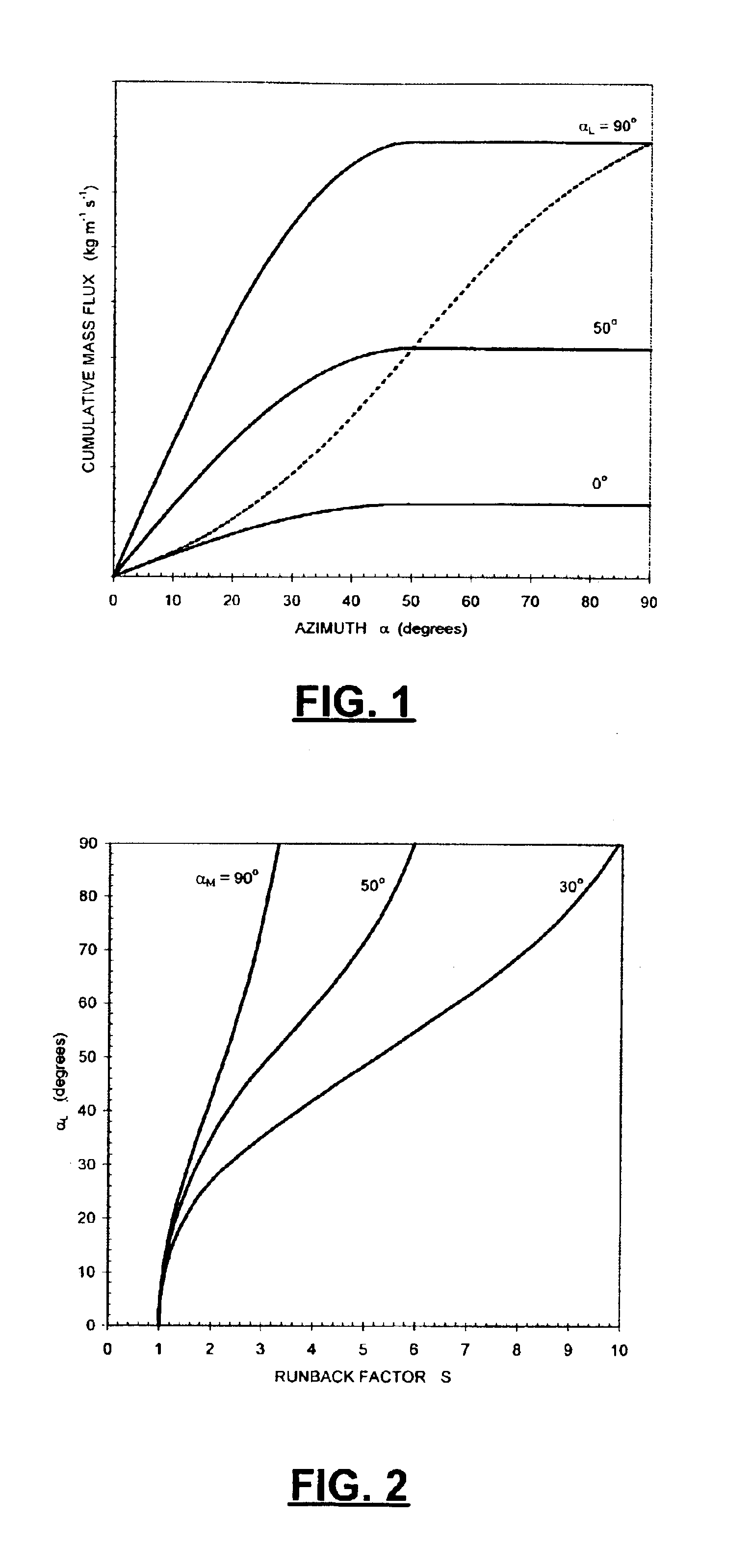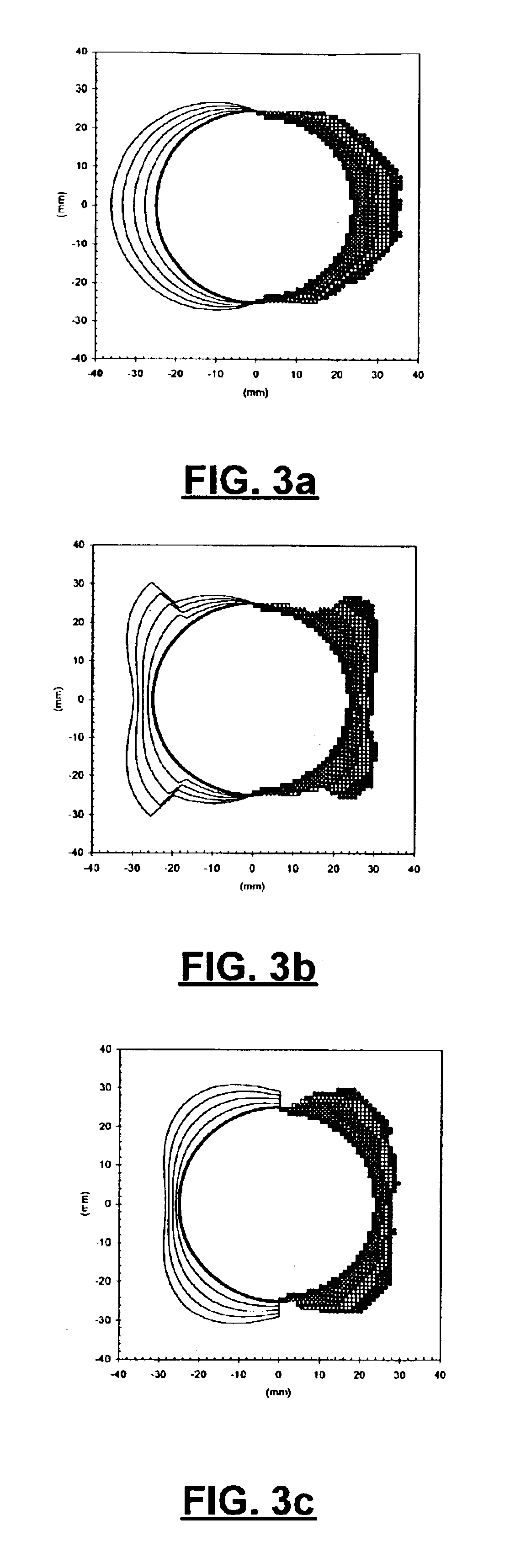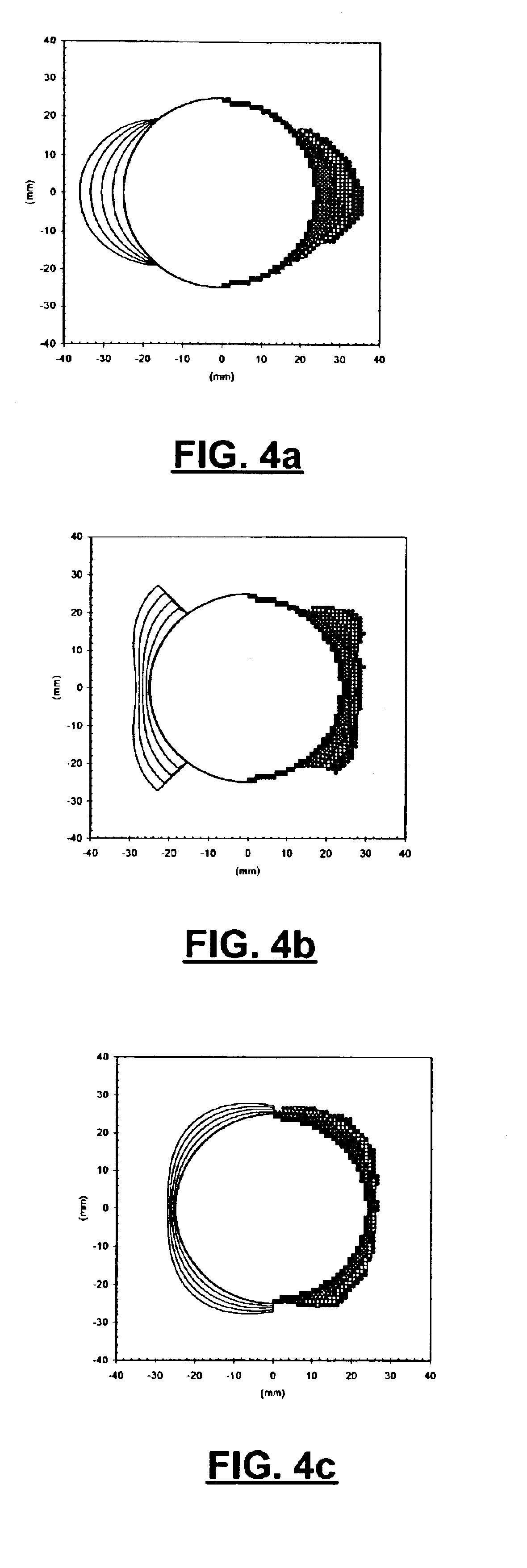Morphogenetic modelling of in-flight icing
a morphogenetic modelling and in-flight icing technology, applied in the field of fluid behaviour, can solve the problem that the prediction of glaze icing is still not sufficiently accura
- Summary
- Abstract
- Description
- Claims
- Application Information
AI Technical Summary
Benefits of technology
Problems solved by technology
Method used
Image
Examples
Embodiment Construction
In the description the following terms are employed:
cchord length (m)FrFrössling numberhconvective heat transfer coefficient (Wm−2K−1)kAthermal conductivity of air (W m−1 K−1)LFspecific latent heat of freezing (J kg−1)mwater mass flux along the surface (kg m−1 s−1)mFfreezing mass flux (kg m−2 s−1)mWimpinging water mass flux (kg m−2 s−1)mTtotal incoming water mass (kg m−2)MFjfreezing mass flux per unit length (kg m−1 s−1)MWViimpinging water mass flux on a vertical surface segment per unitlength (kg m−1 s−1)NuNusselt number based on chord lengthPnfreezing probabilityQCconvective heat flux (W m−2)QEevaporative heat flux (W m−2)Qexternal heat flux, Eq. (5) (W m−2)ReReynolds number based on chord lengthsdistance from the stagnation line (m)sRmaximum runback distance (m)Srunback factorttime (s)TAair temperature (K)TSsurface temperature (K)Uuniform airstream velocity (m s−1)Wairstream liquid water content (kg m−3)x, yspatial coordinates (m)αangle between horizontal and normal to airfoil su...
PUM
 Login to View More
Login to View More Abstract
Description
Claims
Application Information
 Login to View More
Login to View More - R&D
- Intellectual Property
- Life Sciences
- Materials
- Tech Scout
- Unparalleled Data Quality
- Higher Quality Content
- 60% Fewer Hallucinations
Browse by: Latest US Patents, China's latest patents, Technical Efficacy Thesaurus, Application Domain, Technology Topic, Popular Technical Reports.
© 2025 PatSnap. All rights reserved.Legal|Privacy policy|Modern Slavery Act Transparency Statement|Sitemap|About US| Contact US: help@patsnap.com



